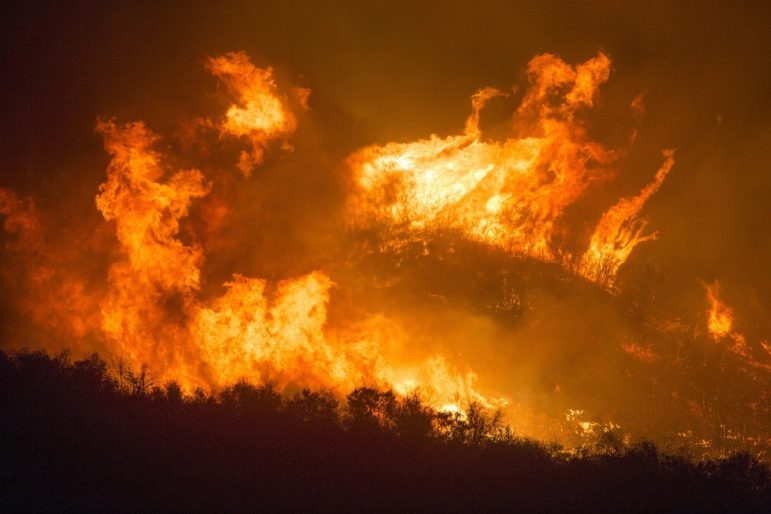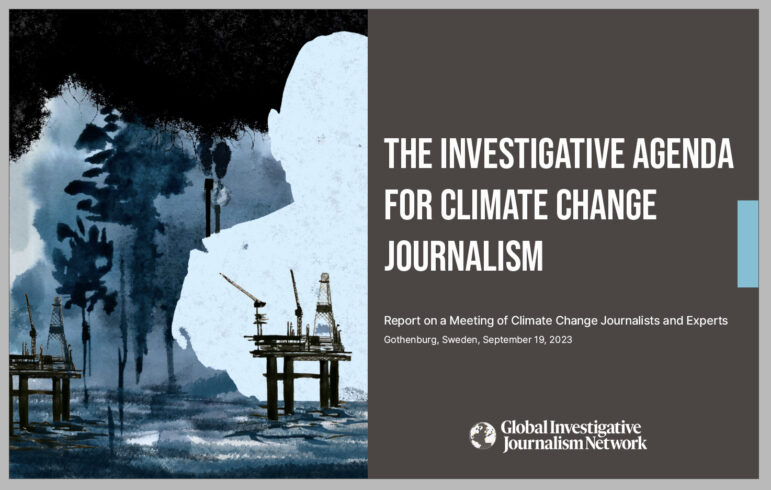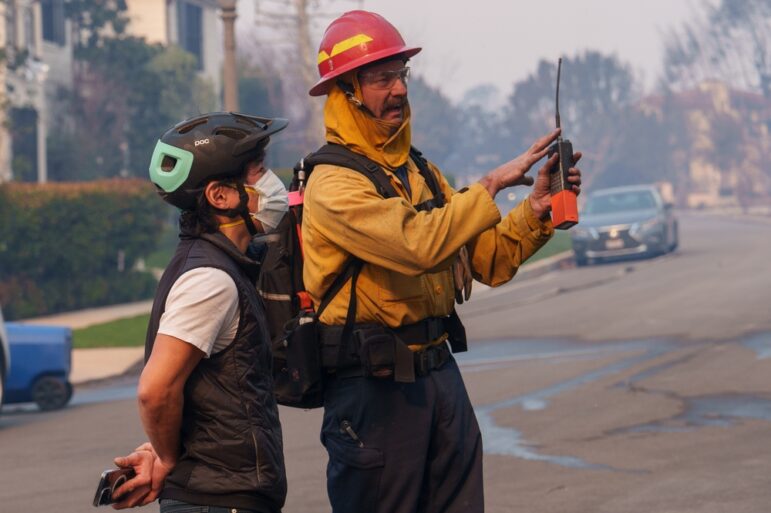

Journalists Need to Start Taking the Climate Crisis Seriously

Photo: Pixabay
Germany has decided to stop using coal as an energy source no sooner than 2038 — and there’s no weeks-long media outcry. The European Union agrees on a huge coronavirus stimulus package — and the vast majority of journalists report it as a historic accomplishment. Researchers spend days publicly discussing whether the Greenland ice sheet is going to melt for good — and it’s barely featured on the news.
This shows that many journalists have apparently still not grasped how serious the climate crisis is, and that we are at a crossroads that will decide the fate of the planet. Too few of us actually understand the concrete and direct threat this crisis poses to our future.
If we keep up today’s emission levels, we will have used up the remaining carbon budget within approximately 10 years. So we have fewer than 10 years to limit global warming to less than 1.5°C above pre-industrial levels. That means 10 years during which our politicians, economists, and the rest of society have to take decisive action and halve CO2 emissions worldwide.
Journalists have read and heard sentences like these hundreds of times. Many of us have written and said them ourselves. But too few of us actually seem to understand what they mean. Or we wouldn’t let politicians and industry leaders get away with ignoring them for years.
If we want to stay well below 2°C of global warming — a goal that was contractually agreed on by almost 190 nations in the Paris Agreement for good reason — then 2020 is the year in which the global community needs to start seriously reducing CO2 emissions. We do know all this. But what does it actually mean?
Acting now is not one option out of many. It’s the last chance scientists see for us to reach the 1.5°C goal.
“Scientists” doesn’t mean random groups or individuals. It means more than 700 independent subject matter experts from 90 countries who invest years of research in order to write the IPCC reports for the UN, so that decisions in climate politics can be science-based. Experts who, after publishing the 2018 special report on the 1.5°C figure, told the world that they themselves cried when they realized how immense a challenge we are facing.
That was two years ago. Two years in which politicians have done close to nothing.
We journalists seem unfazed by the steady stream of reports on new temperature records, stronger hurricanes, drought years, floods, and species going extinct. Sure, we understand that this news isn’t completely meaningless; we dutifully report it and tick the stories off our lists.
But many of us seem unable to see the big picture that all these reports add up to. We don’t realize — and don’t explain to others — what the sum of these developments means for our world. Even though that is exactly what our job as journalists should be about.
Why Don’t Scientists Communicate More Clearly?
But if it’s all so terribly serious, why isn’t anyone saying that? Climate researchers have been saying it for years. Constantly. But to stay within the bounds of proper scientific work, they have to speak in probabilities and ranges. Because they don’t have a magic crystal ball that shows them the future, they can’t be 100% certain that we will be fighting wars over water in Europe in as little as 30 years.
For years, climate researchers were told that they were communicating too negatively and thus demotivating people. They are accused of alarmism, activism, and even selfish motives. Now of all times, when it’s almost too late to act, many of them have switched to more optimistic communication — and their message is still not getting through. Scientists keep saying: “We can still prevent the worst case if we act now.” What the rest of us hear: “We still have time.”
In addition, many of us seem to think: Hey, we started taking action years ago. And yes, the rhetoric has changed. Climate packages are passed; politicians warn us not to take the crisis lightly; the EU recovery deal allocates 30% to climate protection. The remaining 70% are to be spent in accordance with the goals of the Paris Agreement, so at least they aren’t meant to go to things that harm the climate. But how is that supposed to work when the stimulus money is going to conventional economic development? The plan doesn’t elaborate. And too few journalists are asking this question.
What has been done and planned so far is not nearly enough and happening far too slowly; this much is clear to scientists. Even government-affiliated organizations and think tanks are pointing this out, along with some journalists.
But very few of us seem to feel truly worried about any of this. After all, what kind of impact does the climate crisis have on our lives here in the Western world? It’s happening far away, it seems, both in space and time. It affects people in the Sahel zone, a few indigenous peoples, and maybe our great-great-grandchildren. Many of us apparently think and brush the thoughts aside. For us as journalists, it doesn’t seem to affect those we serve: our readers and listeners. And neither does it affect us.
That is not only cynical and unfair, it’s also blatantly false.
The climate crisis is here already, in the Western world, in Europe. In Germany, the water levels of the rivers Elbe and Rhine are low more often; there is massive forest decline not only in the Harz mountain range and the Saxon Switzerland region. There are fewer insects, more jellyfish, more droughts, heatwaves, crop failures and we’re seeing the first shortages of potable water. Glaciers are melting and permafrost grounds are thawing all over the world.
The “next generation” who has to suffer the consequences of the climate crisis is already alive. That generation consists of children who have already been born. They’re our children, on every continent and in every nation.
We Don’t Report What the Climate Crisis Will Mean for Our Children
Most of the children born today will still be in primary school when we possibly exceed the 1.5°C limit as early as the worst case scenario predicts: 2030. Your three-year-old son? He will be 13 then. Your five-year-old grandchild? She’ll be around 15. You see yourself having a child about five years from now? You can do the math, and you get my point. When these children are old enough to be told how serious our situation is, it will be too late to stay under 1.5°C.
But the climate crisis not only affects our children; it also affects us. You’re 42 now? That means you’ll only be 52 when we may have permanently given away our chance to live in a world with a stable climate. According to the current average life expectancy, you’ll then have another 30 years or so in which to experience the increasingly dire consequences of global warming.
This means: You’ll see more droughts and floods devastating the world. You’ll witness even more climate refugees fleeing their homes. Not just on TV, not as mere images sent to you by correspondents abroad. All this will happen right in front of you, outside your door.
In the best case scenario — which is rather improbable — we’ll only pass 1.5°C in 2050. Your three-year-old child or five-year-old grandchild will be in their early thirties. An age at which they themselves might want to have children. And even this scenario wouldn’t mean we have time to act later instead of right now.
This summer, one quarter of Bangladesh was covered in water; weeks-long rains flooded large portions of North and South Korea, including Seoul. Wars and conflicts are exacerbated by climate-related scarcity already today, killing people and displacing others. And they will continue to intensify in the next years.
Iran and Iraq have repeatedly seen lethal temperatures of more than 50°C in the past months. Even in Germany and other European countries, heat waves kill thousands of people every year. This will not stop; it will only get worse.
From the spread of tropical viruses in Europe to the return of diseases that had long been extinct, the consequences for our health are unpredictable — and not only in 30 years. We can’t possibly continue to ignore this after 2020.
Neither can we continue to shrug at the destruction of forests in the Amazon and Siberia, in California and Argentina, in Congo, Kenya, and Angola. We’ve already reached the limits of what the Earth’s climate can take. Whether we can still stay within the 1.5°C limit is also determined by the number and sizes of ecosystems we preserve.
But why is it so horrible if we don’t stick to the Paris Agreement? This is another reality few seem to understand. The signatory states agreed to strive to keep global warming well below 2°C because this could prevent devastating, irreparable harm.
Today we’ve reached 1.2°C. All the carbon emissions that we’ve pumped into the atmosphere will continue to have an effect for millennia to come. So we can’t keep fanning the flames until we are almost at 2°C. We have to turn the tide long before that point, at no more than 1.6 or 1.7°C. And even that level of warming is incredibly dangerous. Why?
2020 Is a Historic Year, Especially for Climate Politics
We may have already reached the first points of no return, scientists warn. The thawing permafrost ground of Siberia is releasing even more carbon and further increasing global warming. The waters of the ice-free Arctic Ocean are heating up even faster and no longer reflecting the rays of the sun the way the ice did. And when one turning point has been reached, we get to the next one even faster — we’re in the middle of a chain reaction that can no longer be stopped.
We’re at the turning point of a crisis that is such a huge threat that many of us can’t wrap our minds around it. 2020 is a historic year in many respects, but it also is for climate politics: Either we as a society understand that now and see to it that our politics and our economies are headed in the right direction in the years to come, or it will be too late.
We don’t have time. We have to act now. Not in 10 years. Today. It may sound hard to believe to some, but we’re talking nothing less than maintaining an inhabitable planet. And this goes for the entire Earth, even the little sliver of it that is right outside our own front door.
As long as we don’t have a critical mass of journalists who understand this and focus their work accordingly, politicians won’t follow suit and take action either.
Climate change deniers aren’t preventing us from changing our world. The problem is also everyone who understands that we have a problem, but who doesn’t want to know how big of an issue it is. Right now, we’re headed for 3 to 4°C global warming. This will make our planet largely uninhabitable.
The coming months are most likely our last chance to exert enough pressure on governments worldwide and move them to take measures that will keep us below 1.5°C global warming. We are now at a historic crossroads, where we decide how the Earth will look for the next 10,000 years. And it seems as though the vast majority of journalists don’t get it.
We Can’t Play Catch Up
If we want to achieve the goals of the Paris Agreement, we have to start reducing our carbon emissions by more than 7% every year, starting in 2020. We won’t be able to catch up on the percentages that we fail to achieve now.
The EU stimulus package as it currently stands would make it almost impossible to stay within the 1.5°C limit — unless other countries were to reduce their carbon emissions drastically. The EU leaders’ behavior in this regard is not only highly unfair in a global context, it also endangers our near future much more than it helps. Following the current plans, we will fuel the fire of the climate crisis until 2027 instead of cooling things down.
If we understand how dramatically the effects of the climate crisis will impact our own children and how small a window we still have for taking action, then we can’t possibly celebrate the EU COVID-19 stimulus package as solely groundbreaking. We cannot stand by and watch the delayed coal phaseout and many other failures.
When are we going to start to report on the effects of the climate crisis in more detail and more prominently? When all the researchers are unanimously saying that we’ve reached all the points of no return?
Don’t get me wrong: There are many excellent journalistic reports on the climate crisis and colleagues who have been warning us about the dangers for years. Anyone who cares to know could easily find out how serious the planet’s situation is. But we aren’t making clear how all this will impact our lives.
The climate crisis is so much more than a beat for journalists who are subject matter experts. It’s a topic that impacts all of our lives and all of journalism.
Every politics editor, every economics writer should know the drastic consequences forecast in the IPCC reports on global warming of 1.5 and 2°C. Nobody should be commenting on political or economic decisions in 2020 without talking about the ways in which they will impact the climate.
The climate crisis equally affects the travel and tech industries, culture and sports, fashion and food. Not as a sustainability trend, but because our carbon emissions are the one main factor that decides the fate of life on this planet.
Monitoring Our Approach Isn’t Activism
Many journalists are rightly upholding the difference between activism and journalism. But when we as the fourth estate monitor adherence to the 1.5°C limit, it isn’t activism. It is a scientific, human, and journalistic imperative. As journalists, we cannot merely record the failures of our political representatives. Political and economic decisions that cause us to exceed the 1.5°C limit aren’t simply one side of the story that has an equal right to be heard and granted column inches.
The climate crisis is a dangerous reality. And it is our job as journalists to accurately depict that reality and to confront both politicians and the public at large with it. That is our key function within democratic opinion formation. We have a responsibility not only to society, but also to our children. Even if they haven’t been born yet.
The COVID-19 crisis has shown the difference that fast and decisive action can make. It has shown what can happen when people ignore scientifically proven facts and how quickly a crisis can escalate if ignored.
And while COVID-19 can affect anyone, the climate crisis will affect everyone. But this time staying at home and sitting tight on your couch won’t protect you.
Additional Reading
Climate Change: Investigating the Story of the Century
Climate Crisis: Ideas for Investigative Journalists
FOIA This! — Requests Uncover Green News
GIJN Environmental Data Sources
This open letter was originally published on Medium. Here is the original post, which is republished with permission. The original version of this open letter was published in German on the platform Übermedien. This version was translated into English by Ruby Morrigan.
 Sara Schurmann has been a journalist for 10 years, working for Tagesspiegel, VICE, Gruner + Jahr, Zeit Online, and funk, among others. In 2018, Medium Magazin chose her as one of its Top 30 under 30. She is based in Berlin.
Sara Schurmann has been a journalist for 10 years, working for Tagesspiegel, VICE, Gruner + Jahr, Zeit Online, and funk, among others. In 2018, Medium Magazin chose her as one of its Top 30 under 30. She is based in Berlin.









